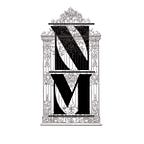If you’re an herbalist, you have heard this story (and probably written versions of it) many times. No need to read further! For everyone else who has heard or repeated the myth that goldenrod causes seasonal allergies: please read this and understand this claim is not rooted in reality.
If you are allergic to plants in the aster family, then sure. Maybe goldenrod poses a problem for you specifically but otherwise: these vivid yellow blooms are not responsible! It is most likely ragweed causing you to sneeze.
Where I live in Southern Appalachia, there are untamed fields of this native plant and people bemoan the golden abundance on our roadsides as a scourge. There are many varieties that grow this time of year (70 or more in North America) and all of them offer nectar for pollinators passing through. Goldenrod is also medicinal for humans and can help with inflammation, infections, and relief for our seasonal allergies. So, it does the exact opposite of what folks accuse this fluffy plant ally.
Why is this plant so misunderstood? When did this herbal misinformation start? I am not quite sure. As much digging as I have done other the years, I haven’t found where this myth originated. I remember watching Disney’s Snow White as a child where Sneezy lives up to his name while sniffing a bouquet of goldenrod. That is when I started believing it was an irritant only to get educated on the benefits of cultivating a relationship with goldenrod as an adult.
It might have something to do with Alabama changing their state flower from goldenrod to camellia, a Japanese flower. According to Kyle Lybarger of Native Habitat Project, the switch was due to marketing from camellia sellers. He currently has a petition you can sign demanding goldenrod be returned to its rightful place as Alabama state flower. I think gestures like this matter because people here call varieties of this native plant weeds.
The scientific name for goldenrod is solidago which means “to make whole” and indigenous people have been working with goldenrod to treat respiratory problems and other illnesses for thousands of years. Community herbalists like Emma Dupree, worked with goldenrod in the mountains of North Carolina. I learned about Dupree’s work initially from Nikki of Chicory Botanicals who shares Dupree’s passion and offers a wealth of herbal knowledge and resources for folks in their community in New Orleans.
In conclusion, goldenrod doesn’t deserve the bad reputation. This plant is a helpful ally to humans and other animals in our ecosystem so I spread the word as much as possible. I drink tea of goldenrod in the fall every year when it blooms in my yard regardless of if I’m sick or not. We added stems harvested and dried by my brother to the floral arrangements at my October wedding. When people ask what they can burn to cleanse their space, I sometimes suggest drying and burning goldenrod as an incense because it is so abundant and the smoke is delightful.
If you don’t want to take my word for it, check out this short Instagram reel from my good friend Tori who runs Cedar Hill Homestead. Or check the many posts about #goldenrod from other herbalists and plant people who are frustrated with this pervasive myth.
